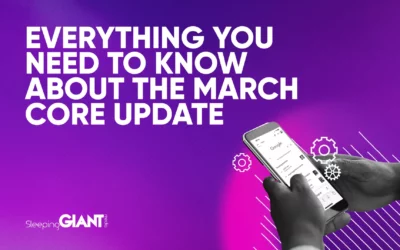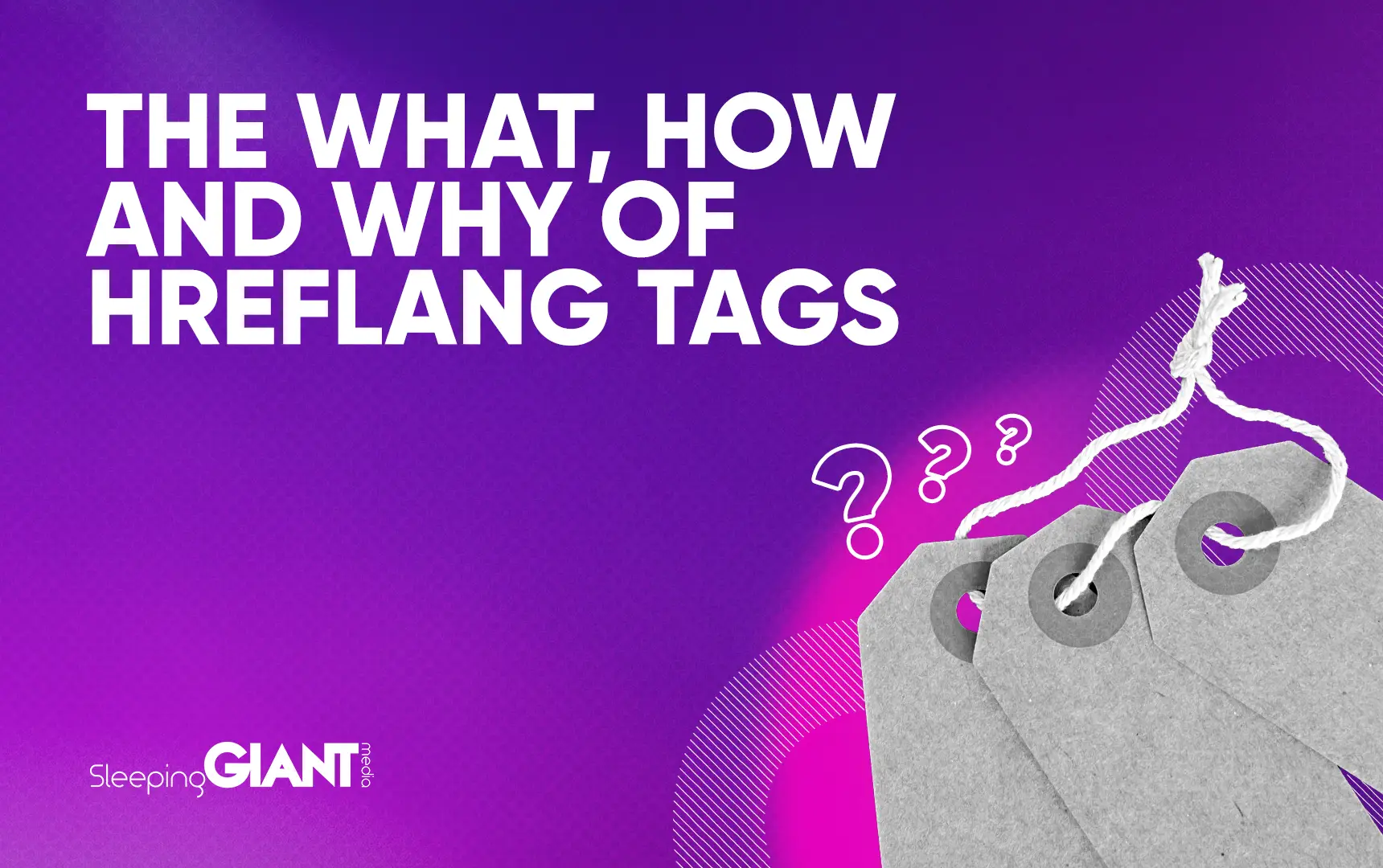
The What, How, Why of Hreflang Tags
In international SEO, hreflang tags are something that often cause a lot of confusion. They can be difficult to get right, but doing so can really help your multilingual SEO efforts. You can use them to target different languages, countries, or even a combination of both.
In this blog, we’ll provide an in-depth introduction to what hreflang tags are, what they do, and why they matter. So, if you’re keen to learn more about why you need hreflang tags, keep reading.
What is an hreflang tag?
A hreflang tag is most commonly a meta tag that goes into the <head> section of a webpage to help search engines understand what language the page is in and what country that page is targeting.
Imagine you have a website targeting the US, UK, and Australia. The only difference between these pages is the currency. If the content is exactly the same, how does Google know which one to show a user in the UK, or another country that speaks English, such as Canada?
Google might see these pages as duplicate content, and will normally choose only ONE to index and show to customers.
Add hreflang tags, and Google understands that the content is supposed to be the same, just served to different audiences who are in different countries. The confusion over which page to show is solved, and Google indexes all three pages in search results and serves them to users in different countries.
Why do hreflang tags matter?
From a user experience perspective, users expect to see the pages in search results for their language and region, not irrelevant pages from another country.
hreflang tags can help increase conversions on your site, as, if someone from Germany lands on the French site from search results, they’ll be unlikely to convert. But, if they land on the German site, they are more likely to convert, as it’s in their language and currency.
From Google’s perspective, hreflang tags help with URL discovery and also help Google understand which pages on your sites are supposed to be targeting different languages and countries.
Always remember though: the hreflang attribute is a signal but not a directive. This means that it is still possible for a different copy of your page to rank higher in the SERPs, although its language is less relevant.
When should you use hreflang tags?
You should only use hreflang tags when you have the same content but in two different languages. If the page is completely different, then don’t use hreflang tags.
You are essentially creating a connecting web of pages for Google to follow so that it understands that Page A is the same as Page B but in a different language, targeting a different country.
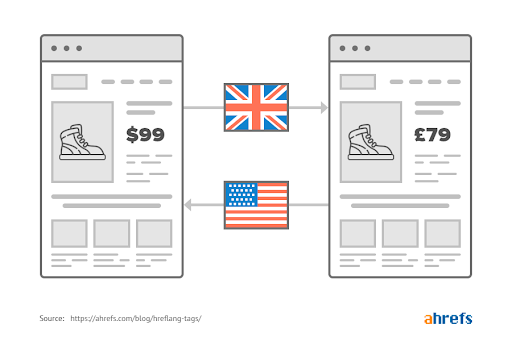
How do hreflang tags help Google?
Google uses hreflang tags to understand which variations to serve to different customers. It does not use them to detect the language of a page.
As per Google’s guidelines:
“Use hreflang to tell Google about the variations of your content, so that we can understand that these pages are localised variations of the same content. Google doesn’t use hreflang or the HTML lang attribute to detect the language of a page; instead, we use algorithms to determine the language.”
Google uses the most specific hreflang tag to match which URL to return to a customer in the search results:
1. Google first looks for a language-country match (e.g., en-es) and returns that page if it exists.
2. If not, it looks for a language code match (e.g., en-us). Crucially, the country code doesn’t matter. Google simply looks for a matching language code.
3. If that doesn’t exist, Google will fallback to the x‑default version.
Do hreflang tags help with duplicate content?
No, tags do not technically resolve duplicate content, they only serve as an indication of which version of a page to serve to customers. Google is much less likely to see a page as duplicate content along with another country’s page if hreflang tags have been added.
Why are hreflang tags important?
For a multilingual website or an international website targeting different languages or countries, hreflang tags are very important. Without them, you’ll end up with SERP results that look like this:
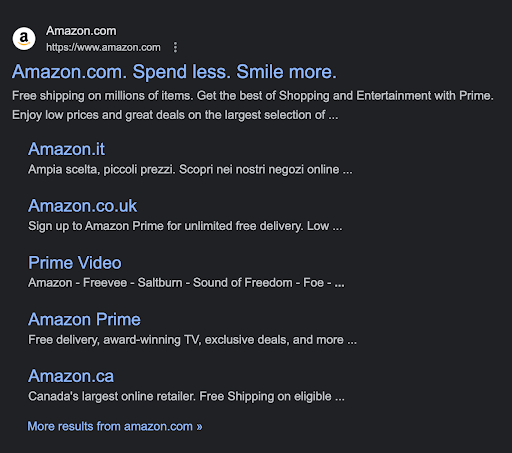
Here’s an example of a site with good hreflang tags and optimisation, which shows only UK results in the UK search results:
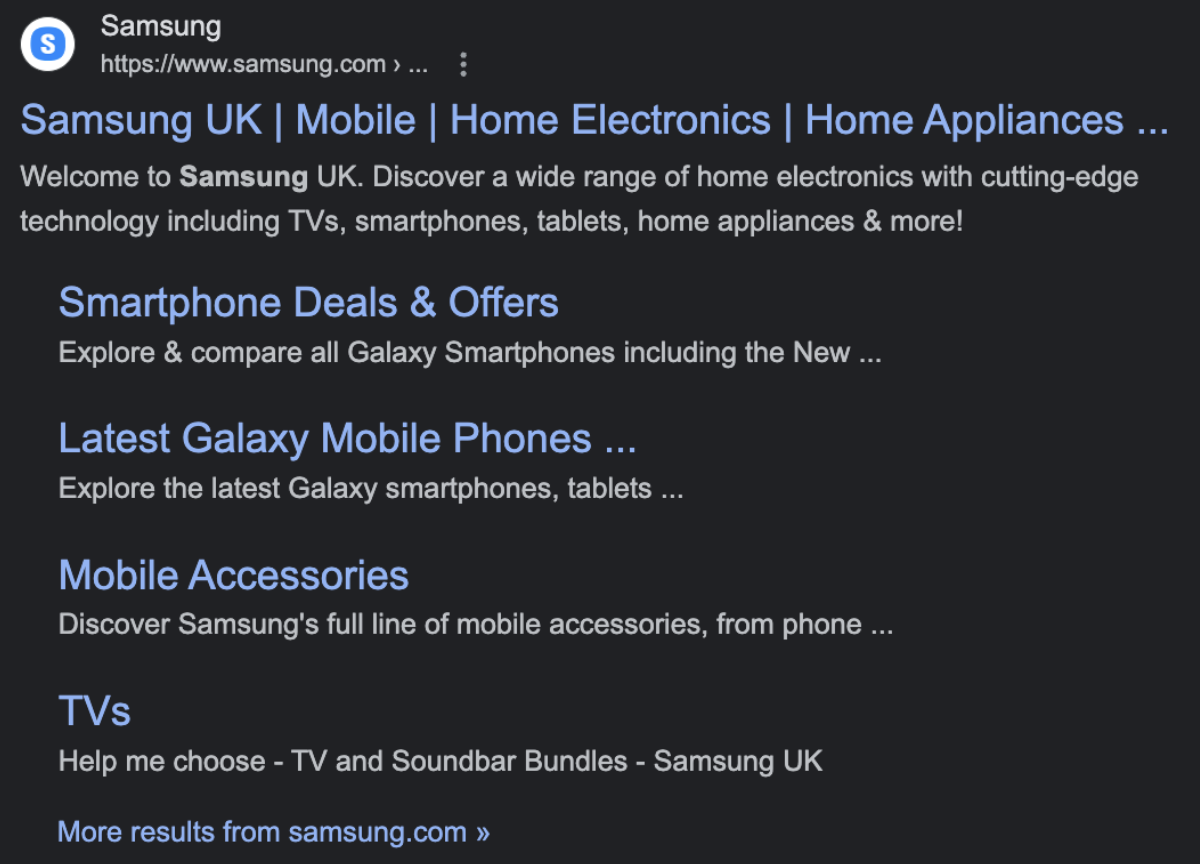
If we change countries to Italy and go to www.google.it, the following shows:
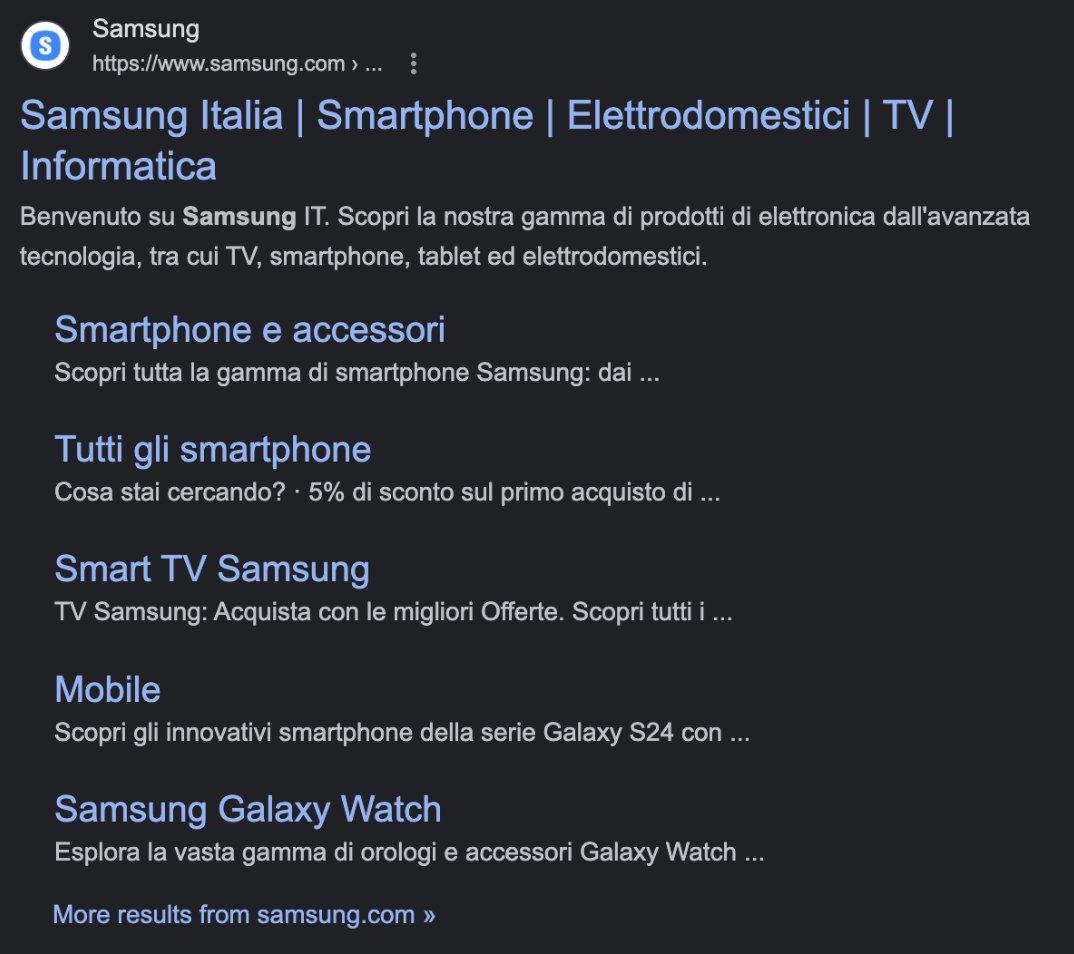
You can see that we have results in the native language of Italian, all of which are from https://www.samsung.com/it/ which is great. Here’s another example of a global company:
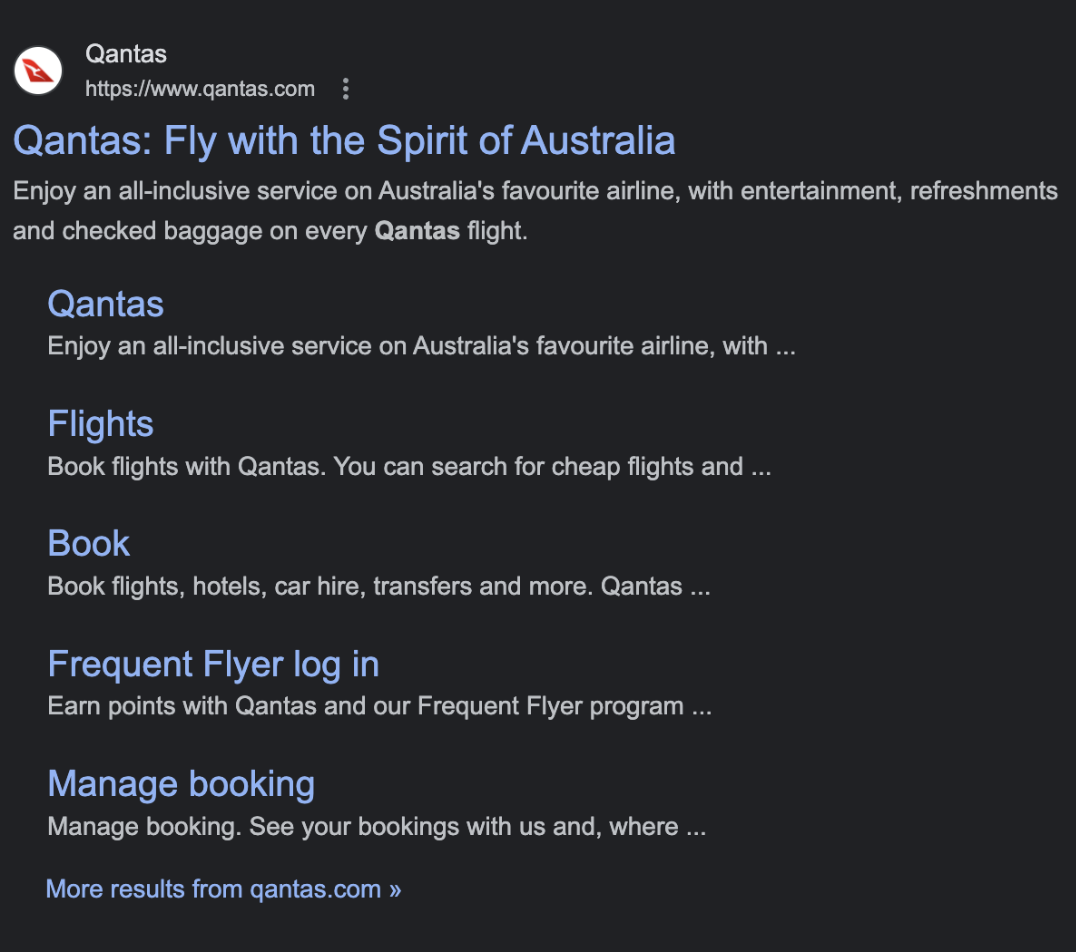
Here’s the links shown in Italian search results for their brand:
https://www.qantas.com/
https://www.qantas.com/it/en.html
https://www.qantas.com/it/en/book-a-trip/flights.html
https://www.qantas.com/au/en/book-a-trip.html
https://www.qantas.com/au/en/frequent-flyer/log-in.html
https://www.qantas.com/it/en/manage-booking.html
You can see here that Google is very confused. There are results from the USA, Italy and Australia here.
Now Qantas doesn’t offer results in Italian, their Italian pages are only in English. Their hreflang tags for the Italian English homepage https://www.qantas.com/it/en.html look like this:
<link rel=”canonical” href=”https://www.qantas.com/it/en.html”>
<link rel=”alternate” hreflang=”en-AU” href=”https://www.qantas.com/au/en.html”>
<link rel=”alternate” hreflang=”en-US” href=”https://www.qantas.com/us/en.html”>
<link rel=”alternate” hreflang=”en-GB” href=”https://www.qantas.com/gb/en.html”>
<link rel=”alternate” hreflang=”en-AR” href=”https://www.qantas.com/ar/en.html”>
<link rel=”alternate” hreflang=”en-AT” href=”https://www.qantas.com/at/en.html”>
<link rel=”alternate” hreflang=”en-BR” href=”https://www.qantas.com/br/en.html”>
<link rel=”alternate” hreflang=”en-CA” href=”https://www.qantas.com/ca/en.html”>
<link rel=”alternate” hreflang=”en-CL” href=”https://www.qantas.com/cl/en.html”>
<link rel=”alternate” hreflang=”en-CN” href=”https://www.qantas.com/cn/en.html”>
<link rel=”alternate” hreflang=”en-FR” href=”https://www.qantas.com/fr/en.html”>
<link rel=”alternate” hreflang=”en-HK” href=”https://www.qantas.com/hk/en.html”>
<link rel=”alternate” hreflang=”en-ID” href=”https://www.qantas.com/id/en.html”>
<link rel=”alternate” hreflang=”en-IT” href=”https://www.qantas.com/it/en.html”>
<link rel=”alternate” hreflang=”en-KR” href=”https://www.qantas.com/kr/en.html”>
<link rel=”alternate” hreflang=”en-MX” href=”https://www.qantas.com/mx/en.html”>
<link rel=”alternate” hreflang=”en-NC” href=”https://www.qantas.com/nc/en.html”>
<link rel=”alternate” hreflang=”en-NL” href=”https://www.qantas.com/nl/en.html”>
<link rel=”alternate” hreflang=”en-NZ” href=”https://www.qantas.com/nz/en.html”>
<link rel=”alternate” hreflang=”en-PG” href=”https://www.qantas.com/pg/en.html”>
<link rel=”alternate” hreflang=”en-PH” href=”https://www.qantas.com/ph/en.html”>
<link rel=”alternate” hreflang=”en-SG” href=”https://www.qantas.com/sg/en.html”>
<link rel=”alternate” hreflang=”en-TH” href=”https://www.qantas.com/th/en.html”>
<link rel=”alternate” hreflang=”en-TW” href=”https://www.qantas.com/tw/en.html”>
<link rel=”alternate” hreflang=”en-ZA” href=”https://www.qantas.com/za/en.html”>
<link rel=”alternate” hreflang=”en-DE” href=”https://www.qantas.com/de/en.html”>
<link rel=”alternate” hreflang=”en-BE” href=”https://www.qantas.com/be/en.html”>
<link rel=”alternate” hreflang=”en-VN” href=”https://www.qantas.com/vn/en.html”>
<link rel=”alternate” hreflang=”en-CH” href=”https://www.qantas.com/ch/en.html”>
<link rel=”alternate” hreflang=”en-ES” href=”https://www.qantas.com/es/en.html”>
<link rel=”alternate” hreflang=”en-FJ” href=”https://www.qantas.com/fj/en.html”>
<link rel=”alternate” hreflang=”en-PF” href=”https://www.qantas.com/pf/en.html”>
<link rel=”alternate” hreflang=”en-VU” href=”https://www.qantas.com/vu/en.html”>
<link rel=”alternate” hreflang=”en-IN” href=”https://www.qantas.com/in/en.html”>
<link rel=”alternate” hreflang=”en-IE” href=”https://www.qantas.com/ie/en.html”>
<link rel=”alternate” hreflang=”en-FI” href=”https://www.qantas.com/fi/en.html”>
<link rel=”alternate” hreflang=”en-JP” href=”https://www.qantas.com/jp/en.html”>
<link rel=”alternate” hreflang=”es-CL” href=”https://www.qantas.com/cl/es.html”>
<link rel=”alternate” hreflang=”fr-FR” href=”https://www.qantas.com/fr/fr.html”>
<link rel=”alternate” hreflang=”ja-JP” href=”https://www.qantas.com/jp/ja.html”>
<link rel=”alternate” hreflang=”zh-CN” href=”https://www.qantas.com/cn/zh_CN.html”>
<link rel=”alternate” hreflang=”zh-HK” href=”https://www.qantas.com/hk/zh_TW.html”>
<link rel=”alternate” hreflang=”zh-TW” href=”https://www.qantas.com/tw/zh_TW.html”>
<link rel=”alternate” hreflang=”ko-KR” href=”https://www.qantas.com/kr/ko.html”>
<link rel=”alternate” hreflang=”x-default” href=”https://www.qantas.com/au/en.html”>
<link rel=”alternate” hreflang=”ko” href=”https://www.qantas.com/kr/ko.html”>
<link rel=”alternate” hreflang=”ja” href=”https://www.qantas.com/jp/ja.html”>
<link rel=”alternate” hreflang=”en” href=”https://www.qantas.com/au/en.html”>
<link rel=”alternate” hreflang=”fr” href=”https://www.qantas.com/fr/fr.html”>
<link rel=”alternate” hreflang=”zh” href=”https://www.qantas.com/cn/zh_CN.html”>
<link rel=”alternate” hreflang=”es” href=”https://www.qantas.com/cl/es.html”>
It’s a lot. We know.
You can see that there’s 3 different rules here for English:
- One which says if you speak English in different countries then you should go to that country’s website
- One which says if you speak English anywhere else in the world (en) then you should go to the Australian website in English
- And then, thirdly, if you speak any other language (x-default) then you should go to the Australian website in English.
Since we’ve used a VPN to pretend that we’re in Italy, we’d expect to see all of the indented links to be https://www.qantas.com/it/en.html, however, they aren’t. This can provide a bad user experience for customers who are looking to book a trip or looking for frequent flyer information for example, as they go to the wrong country version of the website.
Get support with hreflang tags
Hopefully, this introduction provides a good overview of what hreflang tags are and what they do.
If you need support implementing hreflang tags into your metadata, get in touch with our expert team today. Our team is always on hand to provide help and advice to current and new clients.
In the meantime, keep up to date with our blog to read more strategic technical SEO advice.
Blog
Everything you Need to Know About the March Core Update
We knew it wouldn’t be long before Google released their first core update of...
Giant Wednesday
How To Optimise Images For Websites
Digital Marketing, technology & business insights, how-to's and explainer...



